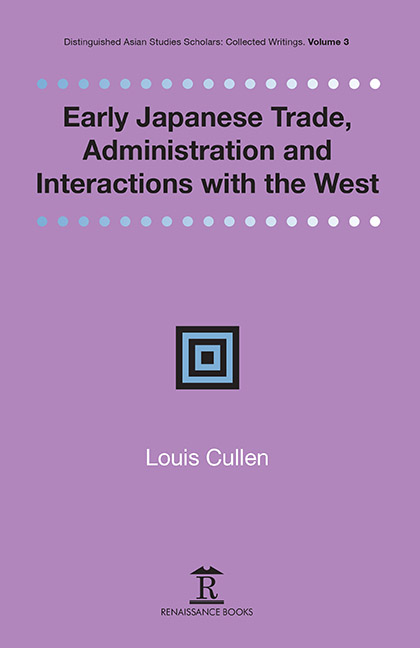8 - Post-1859 Foreign Trade: Statistics of Tokugawa Coastal Trade and Bakumatsu and Early Meiji Foreign Trade. Part 2: Trade in Bakumatsu and Early Meiji Times.
Published online by Cambridge University Press: 30 April 2022
Summary
EVALUATION OF ARCHIVAL sources on Japanese trade in the bakumatsu period (1853–1867) and in the first fifteen years of the Meiji period is the primary purpose of this two-part essay, of which Part 1 appeared in Japan Review, 21 (2009). After the opening of the ports in 1859, statistics were directly compiled by bakufu officials from traders’ invoices. Previously, officials had relied on data furnished by wholesalers (tonya) for coastal trade. The notional parity of a gold yen and a silver yen in the closed gold standard put in place in 1871 broke down in the open market for the Mexican dollar, the accepted unit of account for foreign trade in the newly opened ports. It was only as gold disappeared and Japan's currency system became de facto a silver one that a conversion emerged in national accounts of totals from dollars (or silver yen) into gold yen at close to a one-for-one rate. Arguably, Japanese officials coped well in the early Meiji years with the challenge of creating Western style statistics, even if variant grand totals emerged in the conversion of dollar figures into gold yen in the uncertain monetary conditions. Archival information on coastal trade in earlier Tokugawa times rested on copies. Those copies are few and remote from the originals. This is true also for the new foreign trade of the 1860s. Even under central direction from 1869, only a few copies, mostly drafts rather than final versions, are known for the new aggregates (from 1869, in gold ryō; from 1871, in gold yen). The basic dollar totals forwarded regularly from individual Custom Houses to the central authorities, the key raw material for converting dollar grand totals into gold yen until the 1880s, are known almost exclusively from figures in the British Parliamentary Papers.
LEARNING THE ART OF FOREIGN TRADE STATISTICS
If Japanese officials in the bakumatsu years had wished to maintain their trade accounts in the old style without being importuned by others to change, it would have been impossible to do so. Coming from societies already accustomed to the collection and use of copious statistics, representatives of Western nations sought to document Japan in statistical terms. Japanese officials found themselves badgered not only by consular officials but also by foreign merchants.
- Type
- Chapter
- Information
- Publisher: Amsterdam University PressPrint publication year: 2020



